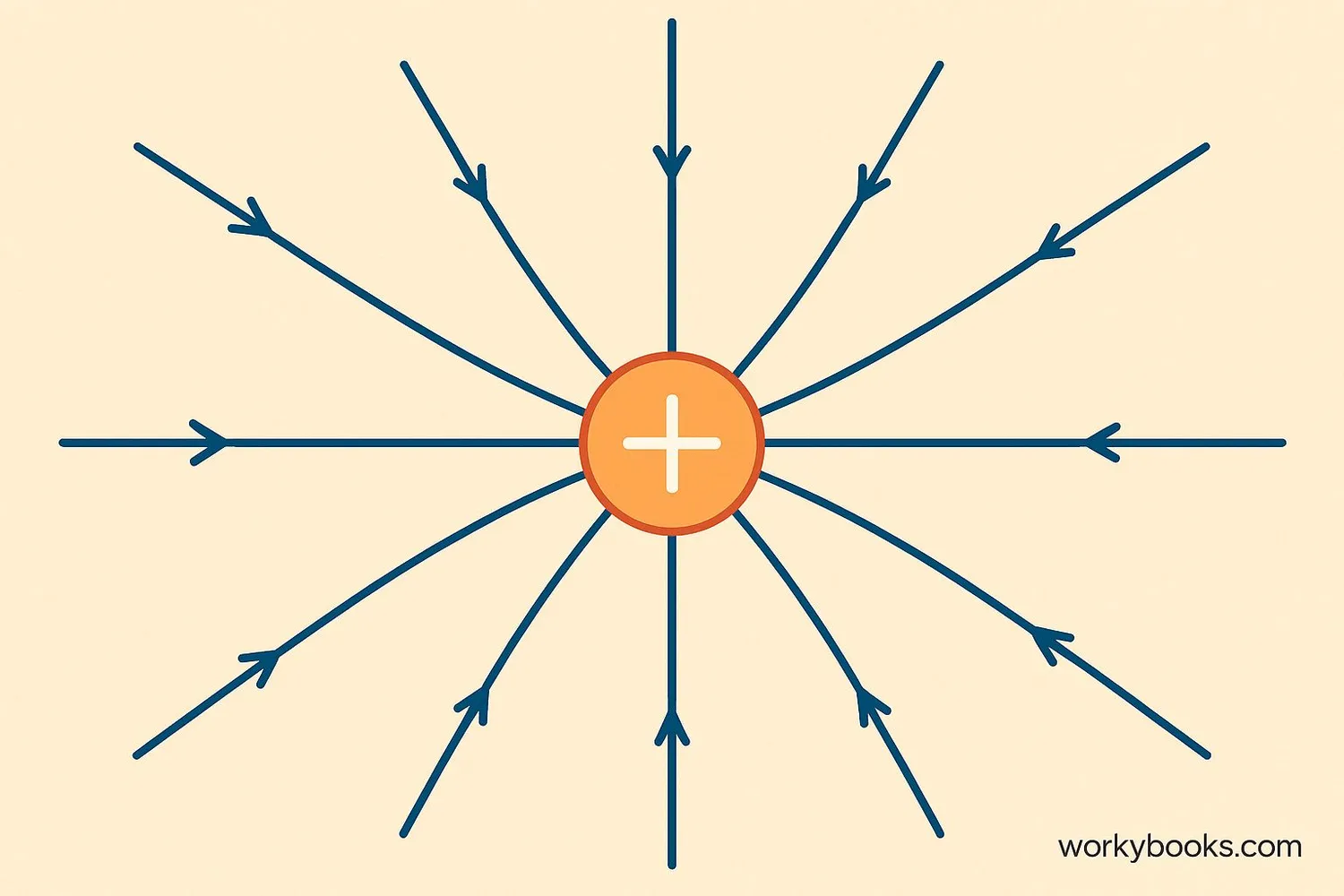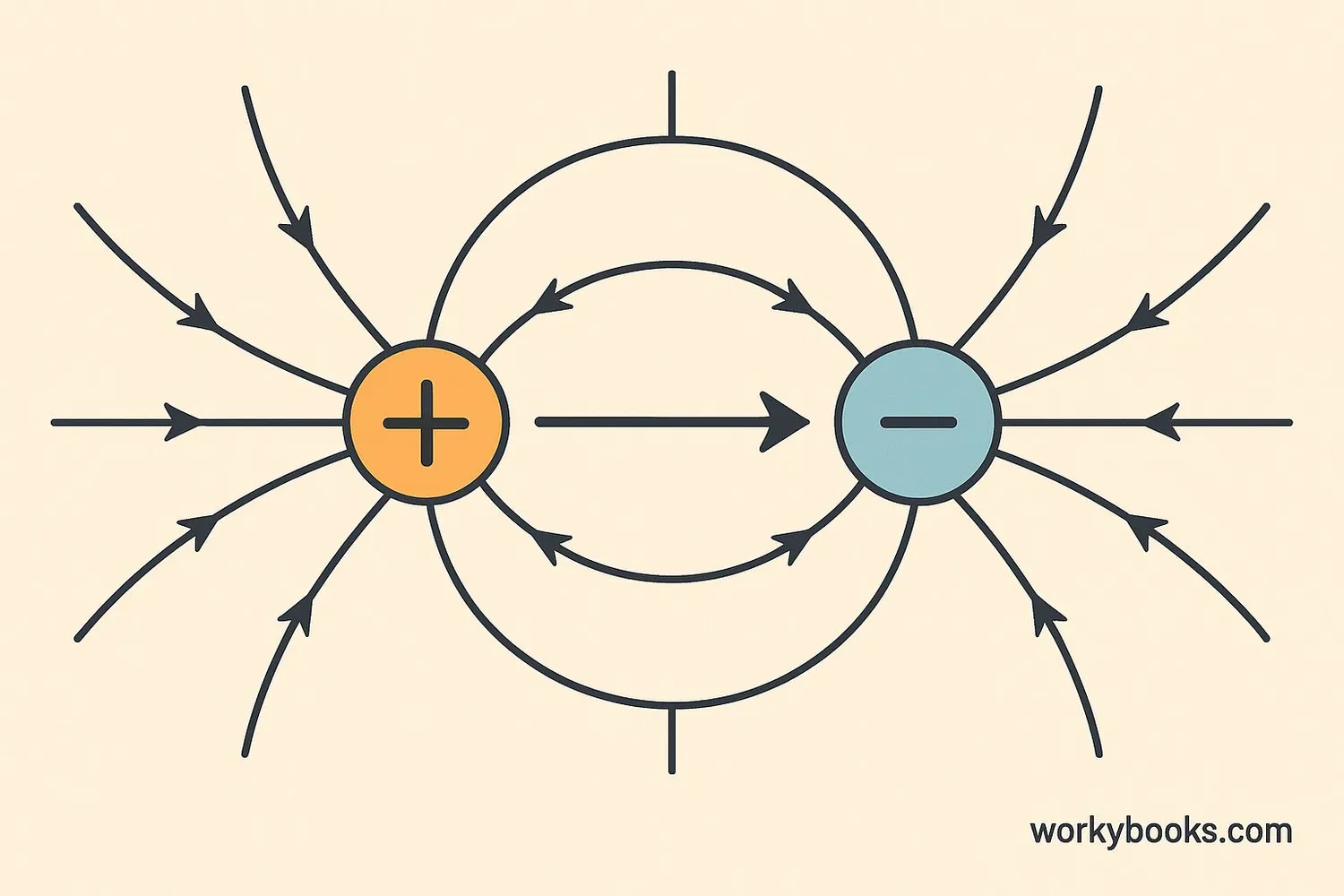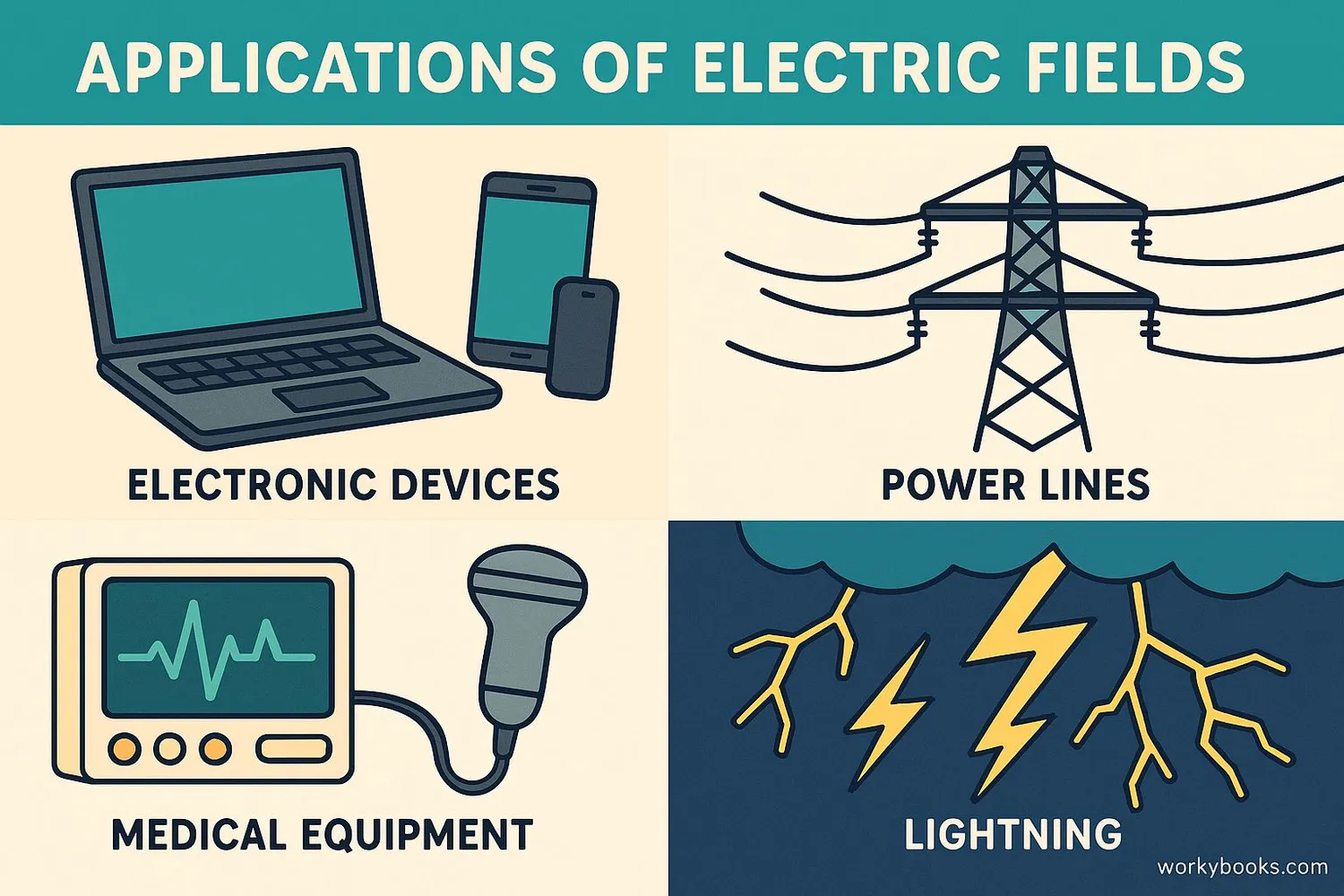Electric Field - Definition, Examples, Quiz, FAQ, Trivia
Discover the invisible forces that power our world!
What is an Electric Field?

An electric field is an invisible force field that surrounds electric charges. It's the area where electric forces can be felt. Just like gravity pulls objects toward Earth, electric fields push or pull other electric charges.
Think of an electric field like the area around a magnet where you can feel its pull, but for electric charges instead. Every charged object creates an electric field around it. The strength of this field depends on the amount of charge and how close you are to it.
Key Concept
Electric fields are measured in volts per meter (V/m). The direction of the field shows which way a positive charge would move if placed in that field.
Positive Charge
Field lines point away from positive charges
Negative Charge
Field lines point toward negative charges
Field Strength
Stronger near the charge, weaker farther away
How Electric Fields Work

Electric fields work by exerting forces on other electric charges. This force can either push charges apart (if they're the same) or pull them together (if they're opposite). The strength of the force follows Coulomb's Law, which tells us that:
Where F is the force, q₁ and q₂ are the charges, r is the distance between them, and k is a constant. This means:
• The force gets stronger as charges get closer
• The force gets stronger with larger charges
• Opposite charges attract, same charges repel
Field Direction
Fields point in the direction a positive test charge would move
Field Strength
Measured by how much force a charge experiences
Field Lines
Show direction and relative strength of the field
Voltage Connection
Voltage is like the "electric pressure" created by electric fields. It's the difference in electric potential energy per charge between two points.
Why Electric Fields Matter

Electric fields are everywhere in our world and essential to modern life. They're not just science concepts - they power our daily activities and technologies:
Electricity
Power grids use electric fields to deliver energy to our homes
Electronics
Smartphones and computers rely on electric fields to function
Medicine
ECG machines measure the heart's electric field
Without electric fields, we wouldn't have:
• Lighting in our homes
• Electronic devices like phones and computers
• Medical imaging technologies
• Modern transportation systems
Electric fields are also part of natural phenomena like lightning and the Northern Lights. Understanding them helps us harness electricity safely and develop new technologies.
Electric Field Quiz
Test your knowledge about electric fields with this quiz! Answer all 5 questions to see how much you've learned.
Frequently Asked Questions
Here are answers to common questions about electric fields:
Electric Field Trivia
Discover amazing facts about electric fields:
Electric Animals
Some fish like electric eels can create electric fields up to 600 volts! They use these fields to navigate, communicate, and stun prey.
Lightning Power
A single lightning bolt contains about one billion volts of electricity - that's enough to power a small town for a day!
Historical Discovery
Michael Faraday introduced the concept of electric fields in the 1830s. His experiments with electricity and magnetism revolutionized physics.
Body Electricity
Your heart generates an electric field that doctors measure with an ECG machine. This helps them monitor your heart's health!


